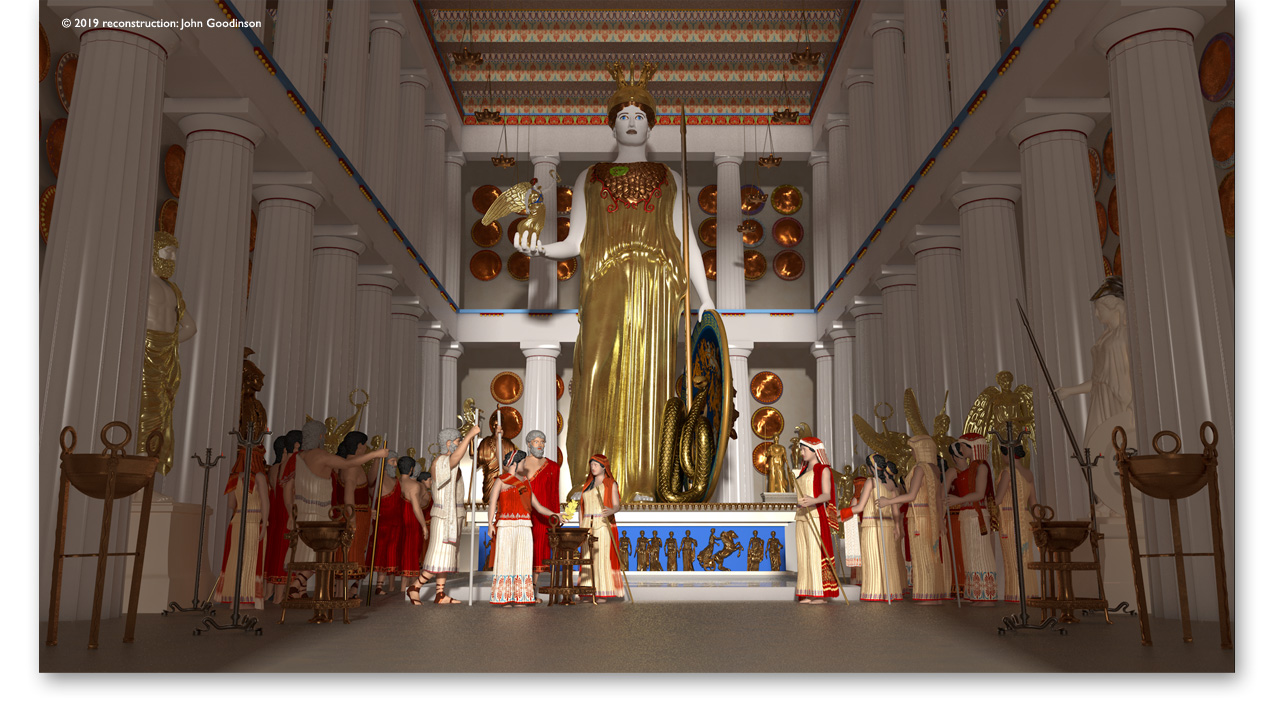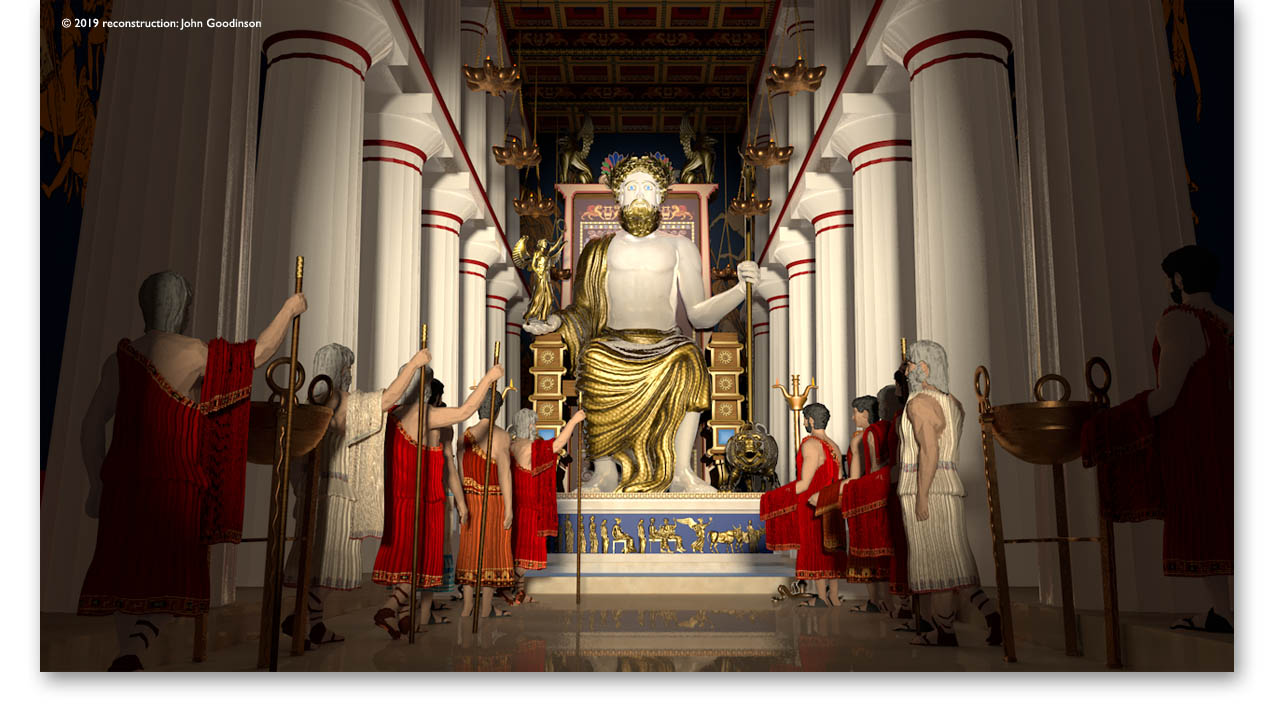In the middle of the fifth century BCE, the master sculptor Pheidias, was charged with two colossal statues that would transform this history of Greek art. The first was the titanic statue of Athena in the Parthenon in Athens. The second was enormous image of Zeus in the temple of Zeus at Olympia.
Both of these images were made of chryselephantine - gold and ivory; both were acknowledged by contemporary audiences as masterpieces; and both were famous throughout the ancient Mediterranean - the statue of Zeus ranks as on of the Seven Wonders of the Ancient World.
The statue of Athena in the Parthenon (the Athena Parthenos) is known through several Roman period copies; the Roman travel writer Pausanias also describes the image in his log of his journey through Greece in the second century AD.
The image was over 10 m tall and showed the goddess standing. She wore an elaborate helmet (probably topped with mythical beasts) a breastplate of snakes scales, and a traditional Athenian peplos (robe).
Her shield rested at her left side. Her shield's exterior surface was decorated with a battle scene showing a fight between Athenians and Amazons; it's interior surface was painted with a battle scene showing a fight between Gods and Giants.
Her sandals, also, were heavily decorated and showed a battle of Greek and Centaurs. The statue base upon which she stood was also elaborately decorated and showed a scene depicting the Birth of Pandora. Perhaps the most dynamic aspect of the sculpture was the smaller statue of Nike that Athena held in her outstretched hand, a scintillating image of Victory that Athena offers to the Athenians who worship her . . .
The appearance of the statue of Zeus in the god's temple in Olympia (the Olympian Zeus) is also known from contemporary coins and a number of Roman versions. It also featured prominently in Pausanias's travel writing.

Like Pheidias's statue of Athena, his statue of Zeus was made of ivory and gold. The image was over 10m tall and showed the god seated on an elaborate throne. He wore a robe, crown, and carried his mighty thunderbolt in one hand and a smaller statue of Nike in the other. His throne was elaborate and was decorated with finely painted panels that showed various mythological scenes.
The statue base upon which Zeus sat was decorated with a high relief scene depicting the birth of Aphrodite. This statue of Zeus was so tall, that would it have stood up inside the building it would have been twice the height of the temple itself.
Both of these images were designed to be seen as physical and metaphorical epiphanies: the actual presence of the gods on earth, concrete manifestations of the colossal powers of Olympus itself.


